Unit 2 Xray Film v20.pptx
1/86
There's no tags or description
Looks like no tags are added yet.
Name | Mastery | Learn | Test | Matching | Spaced |
|---|
No study sessions yet.
87 Terms
Radiographic Process
X-ray Tube →
Useful(Primary) Beam →
Body →
Exit Beam or Remnant Radiation (Contains Aerial Image) →
Crystals of the Film (Latent Image) →
Manifest Image.
After x-rays interact with the body, two things happen
Attenuation (absorption of the photons) and you have penetration.
So whatever x-rays penetrates and leaves the patient's body is also known as
Exit Beam or Remnant Radiation (Note: “exit beam” are useful X-rays that pass through the patient and hit the screen, forming the image. “Remnant” is both exit beam and scatter radiation)
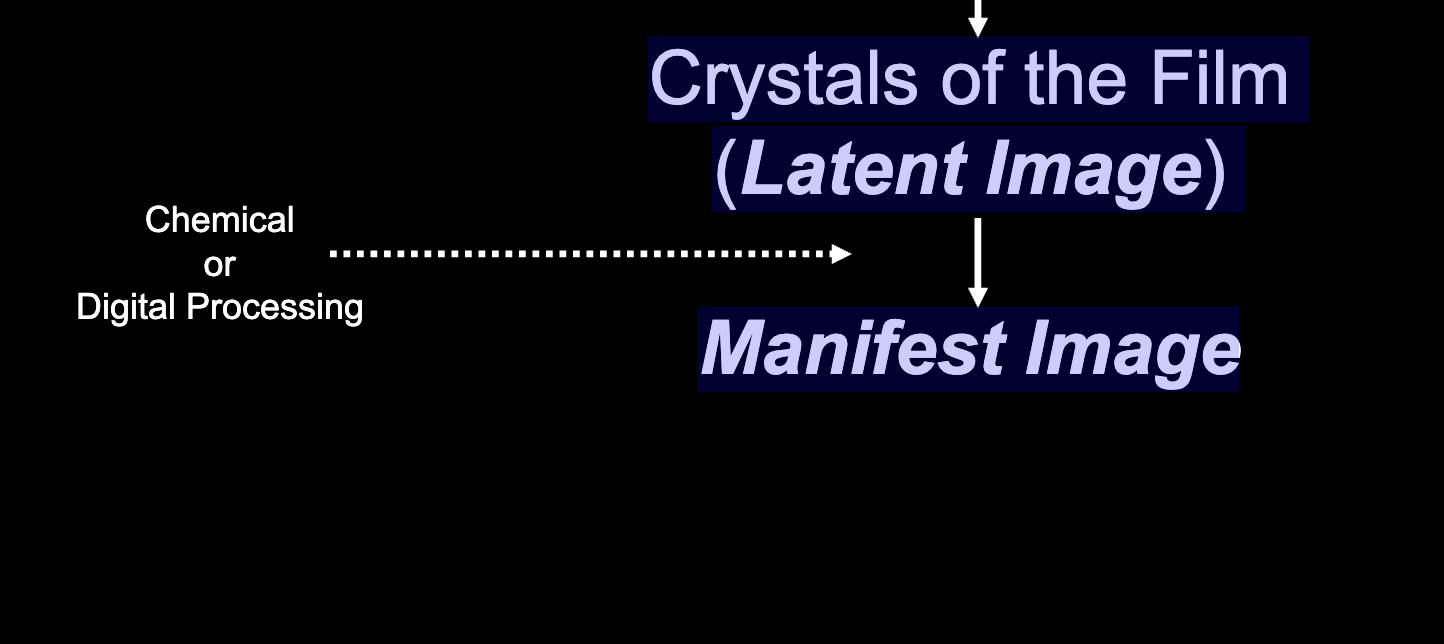
Chemical or Digital Processing happens between what 2 processes (Note: the processing is when the invisible image turns visible)
Crystals of the Film (Latent Image) → Manifest Image
Latent image is invisible or visible?
Invisible
Manifest is invisible or visible image?
Visible
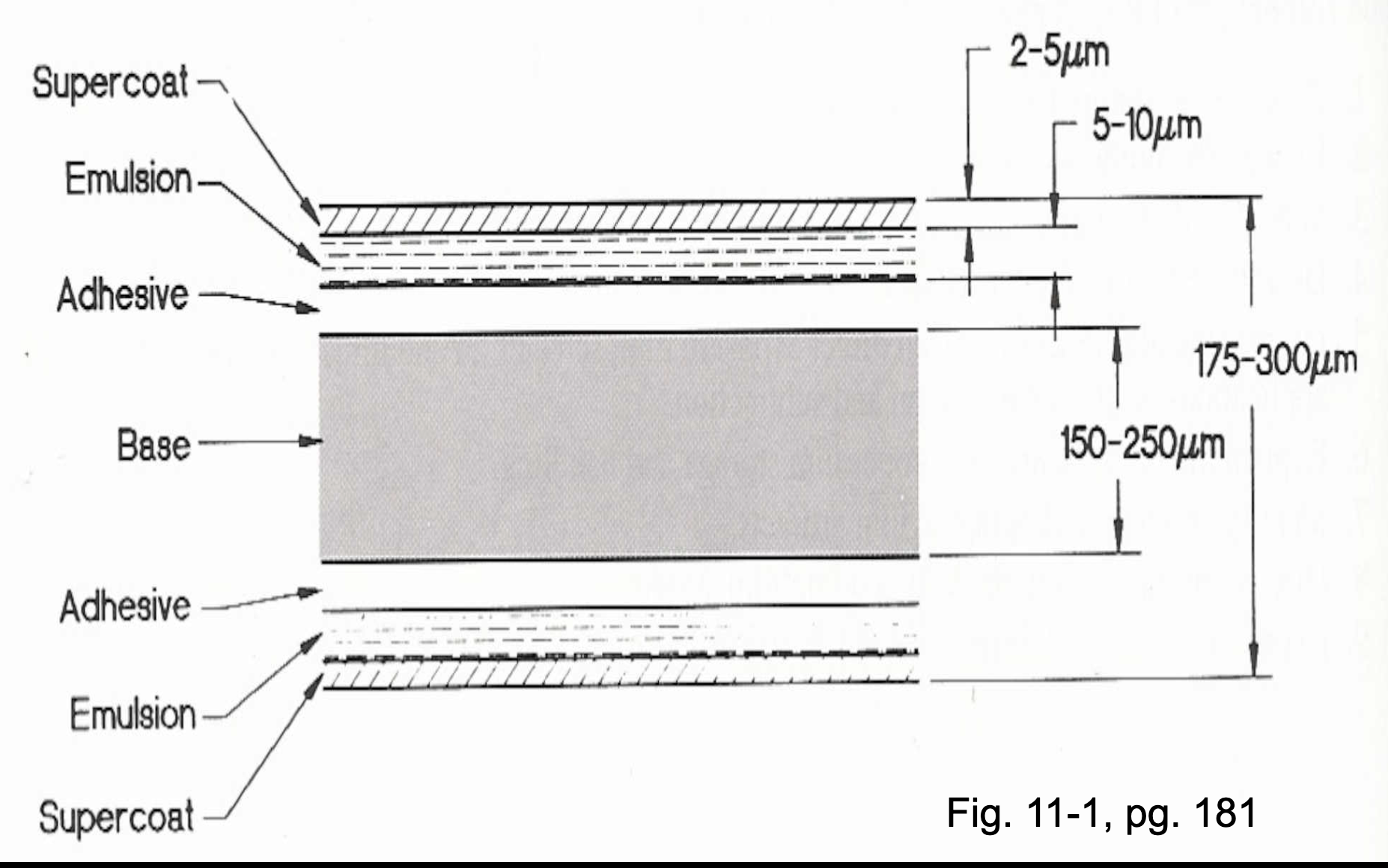
Layers of the film (Note: Dont focus on the thickness (the # on the right side)
1. BASE
2. ADHESIVE COATING
3. EMULSION
4. PROTECTIVE COAT
What is the purpose of the base in X-ray film composition?
The base provides rigidity so it can be coated with emulsion. It is flexible, unbreakable, and easy to handle.
What material was used as the base for X-ray film before WWI?
Glass
What was the problem if the Glass broke for the film. (Side Question)
You would lose your medical record
What is a key risk associated with using cellulose nitrate as the base material in X-ray film?
Cellulose nitrate is highly flammable when improperly stored or handled.
Why is cellulose triacetate referred to as "safety film"?
Cellulose triacetate is non-inflammable and was developed by George Eastman.
What are the advantages of polyester as a base material in X-ray film?
Polyester is flexible, stable, has a blue tint, and isn’t prone to warping like cellulose triacetate.
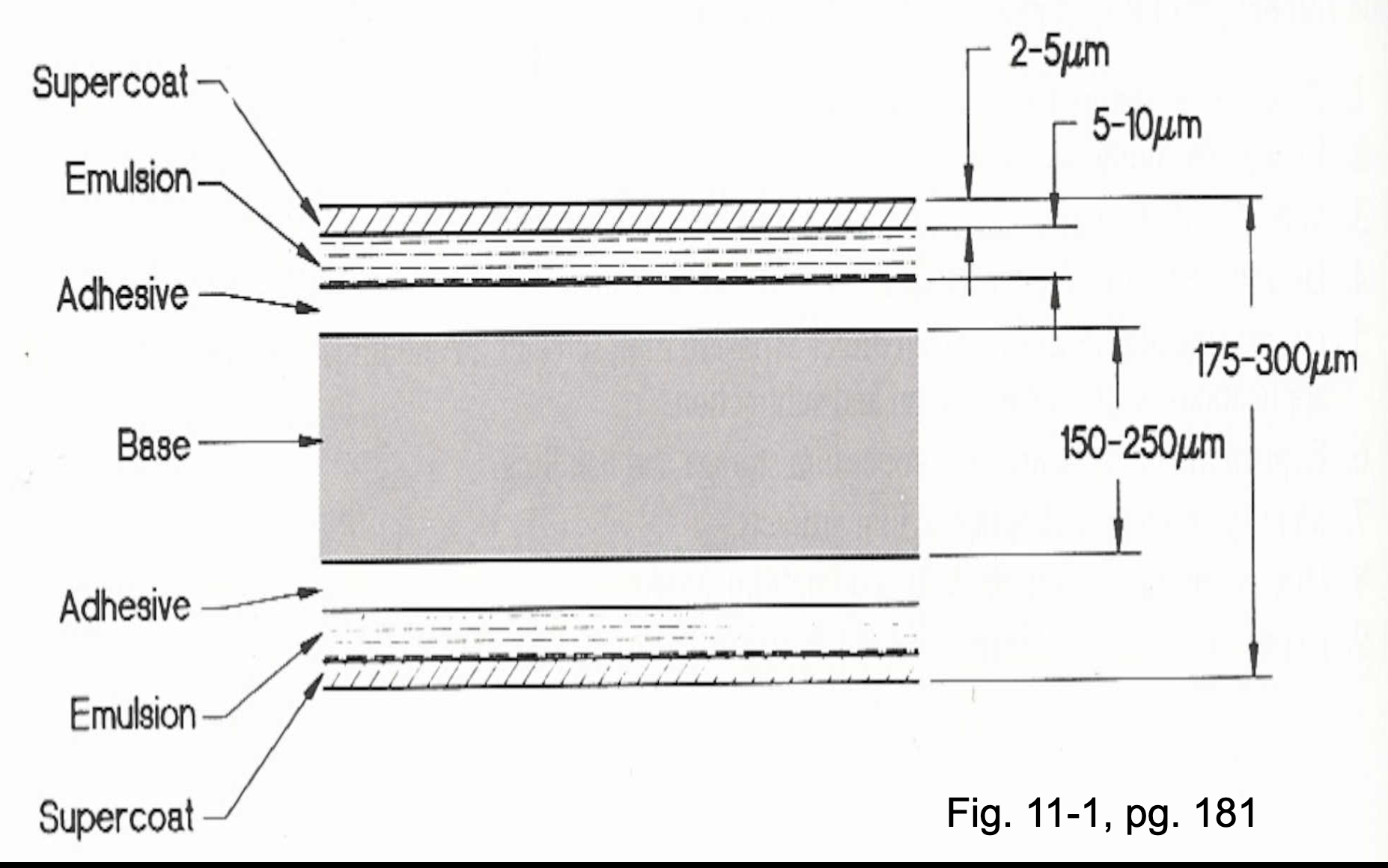
What is the purpose of the adhesive coating?
Adhesive coating: binds emulsion to base.
What is Emulsion in X-ray Film?
Emulsion is the most important part of x-ray film. It is made up of silver halide crystals suspended in gelatin.
95% of the crystals are silver bromide (AgBr)
5% are silver iodide (AgI)
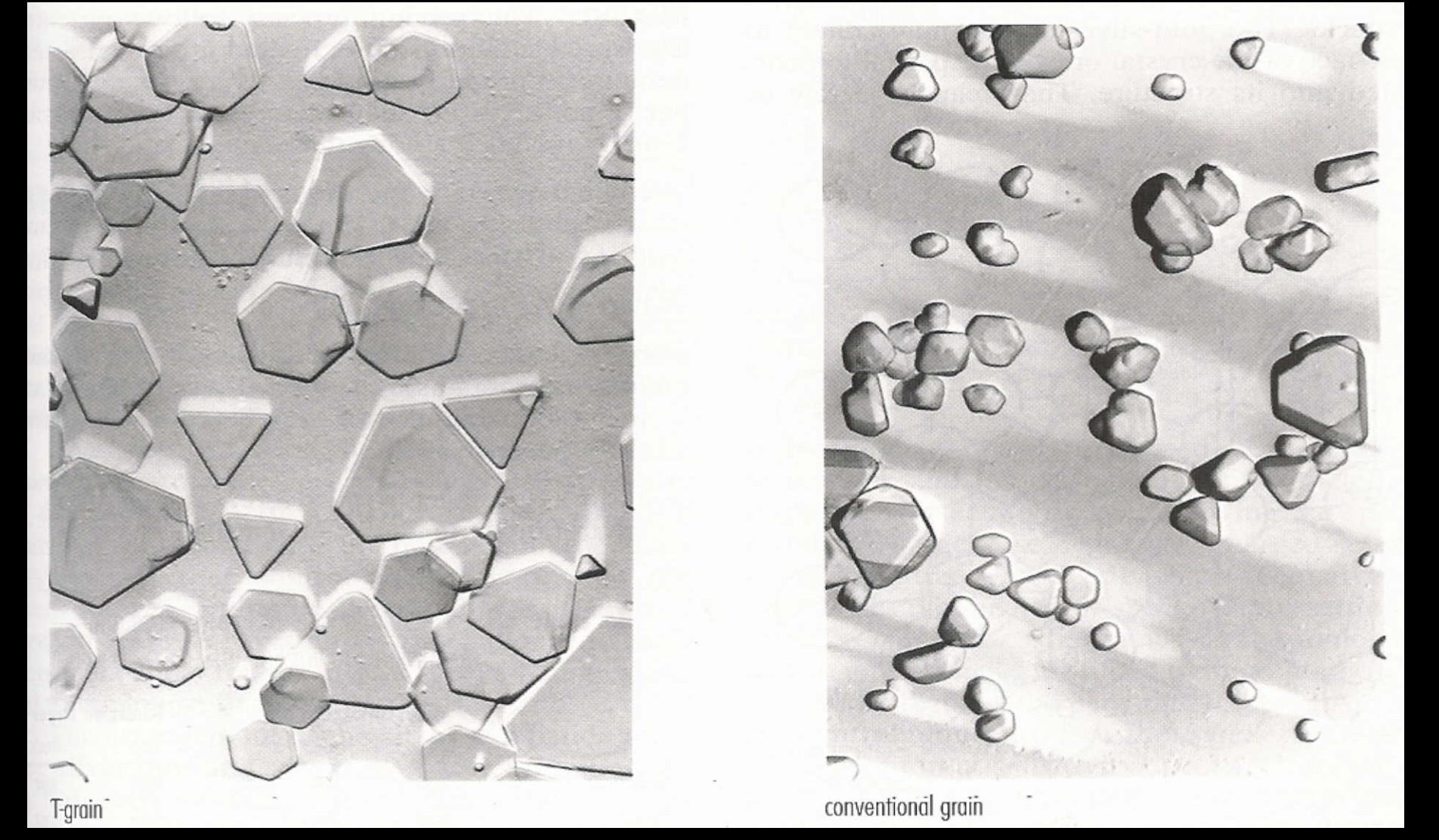
Gurney-Mott Theory of Latent Image Formation
A contaminant or sensitivity speck is added to make the crystals respond to the action of x-ray and light. (Note: “added” is during the manufacturing process)
What is the charge of Silver? What about the Sensitivity Speck
Positive charge, Negative charge (when struck by light or x-ray)
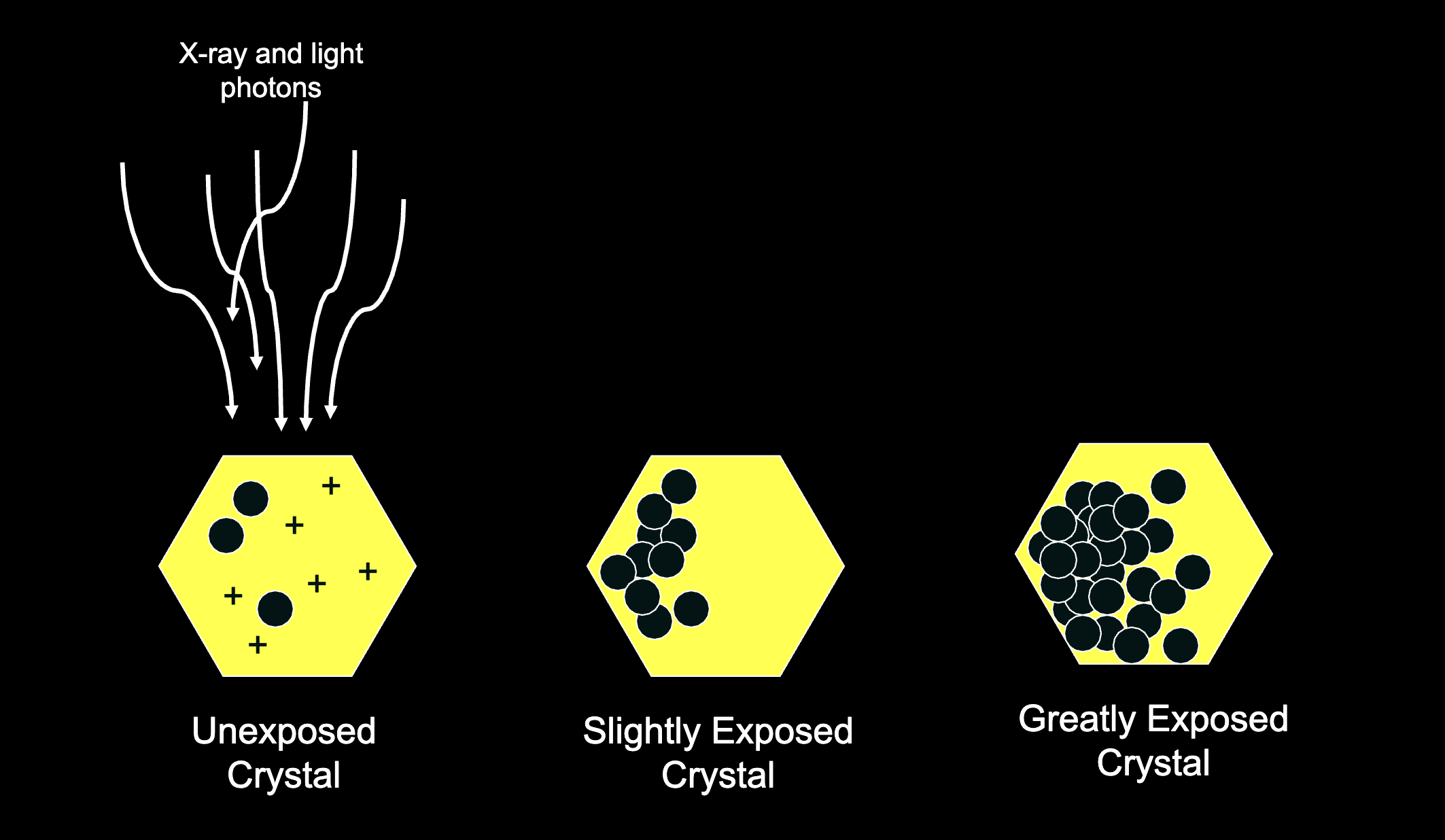
What happens when a X-ray/light photon interacts with the crystal according to the Gurney-Mott Theory of Latent Image Formation? (Note the speck is the black dots)
The sensitivity speck gains a negative charge, and positively-charged silver is drawn to the sensitivity speck, resulting in black metallic silver. (Note: When light or X-ray photons hit the crystal in the film emulsion, the sensitivity speck gains a negative charge. This charge attracts positively charged silver ions in the emulsion, causing them to stick to the speck. Over time, this results in the formation of black metallic silver in that area, which is what makes up the latent image on the film.)
What type of film has a layer of emulsion on both sides?
Double emulsion or duplitized film (Note: Double emulsion film has layers of emulsion on both sides, making it more sensitive to x-rays and reducing the radiation dose needed for exposure. This allows for faster image development but can cause slight blurring due to the parallax effect)
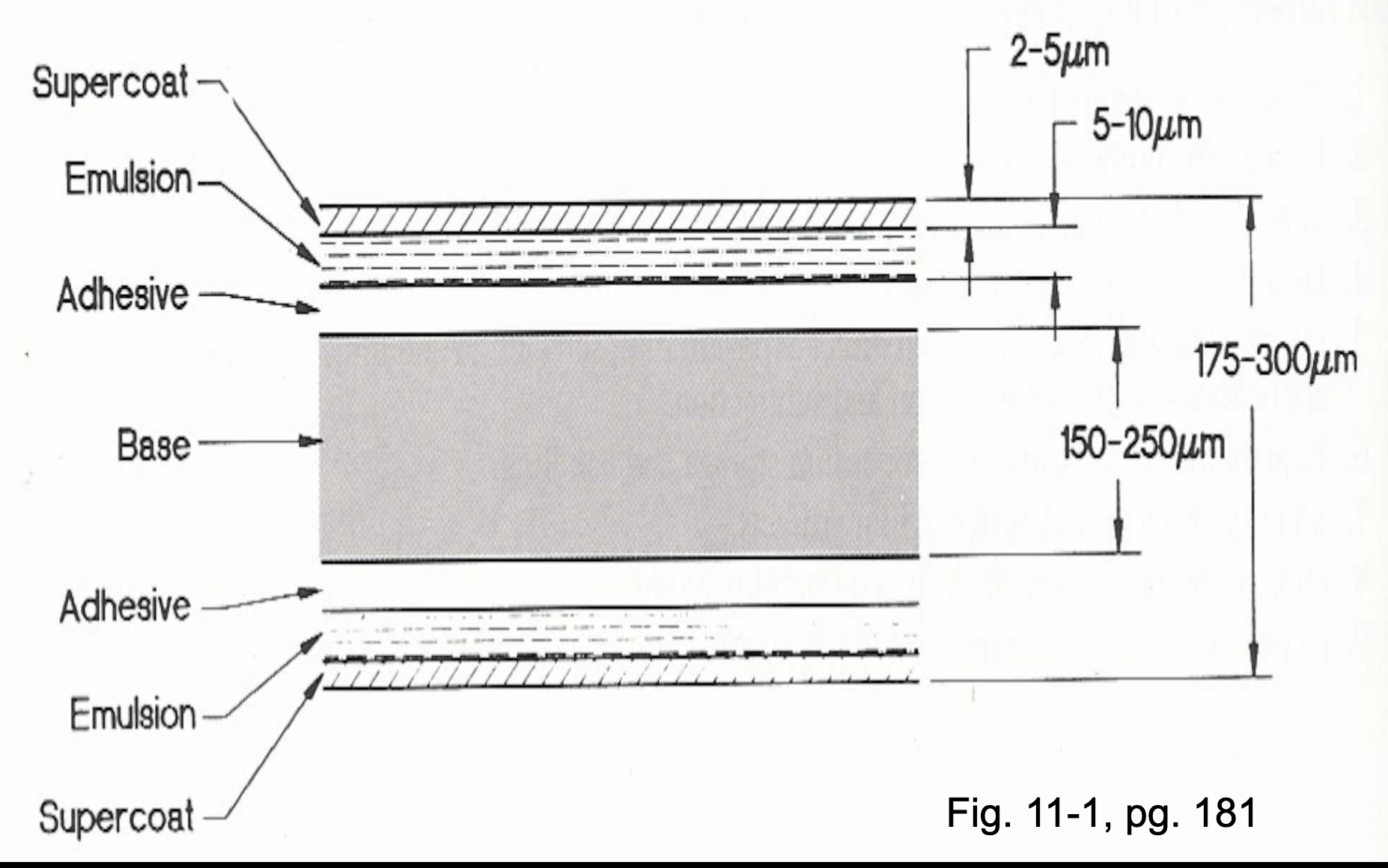
What is the advantage of using duplitized film?
Decreases radiation exposure to the patient because it is faster and requires less x-ray energy to darken the film
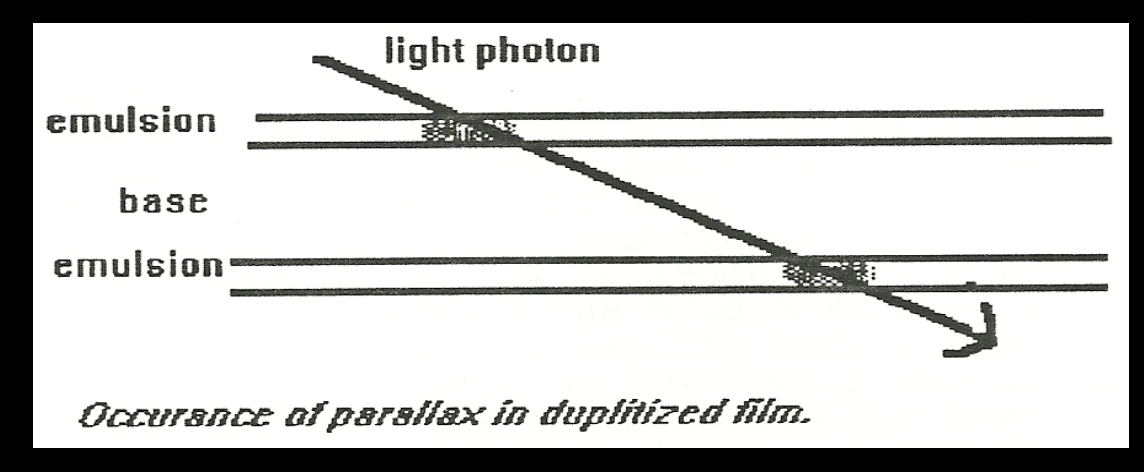
What is the disadvantage of using duplitized film?
The parallax effect occurs, which causes slight blurring and loss of detail at the edges of an object.
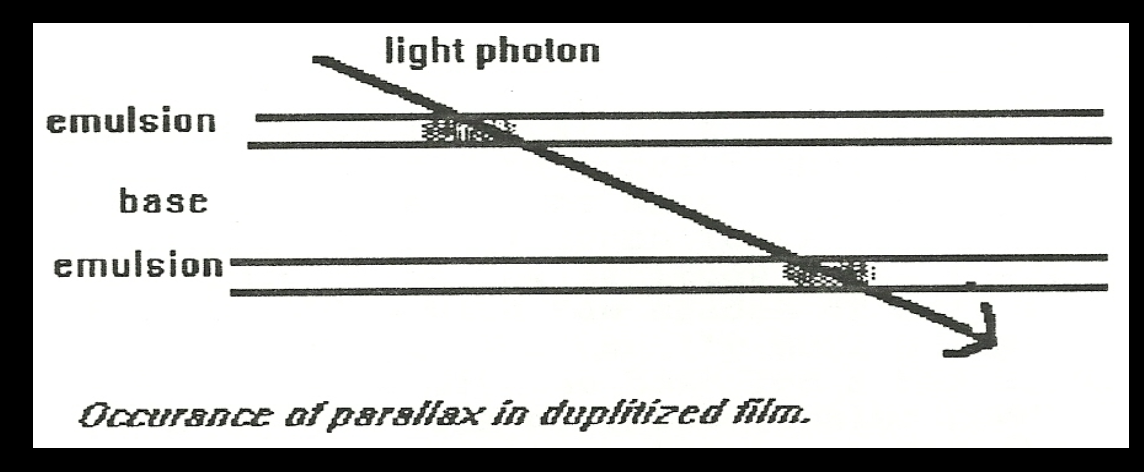
What causes the parallax effect in duplitized film?
The parallax effect occurs when a light photon enters the film emulsion at an angle, passes through the base, and affects the emulsion on the opposite side of the film
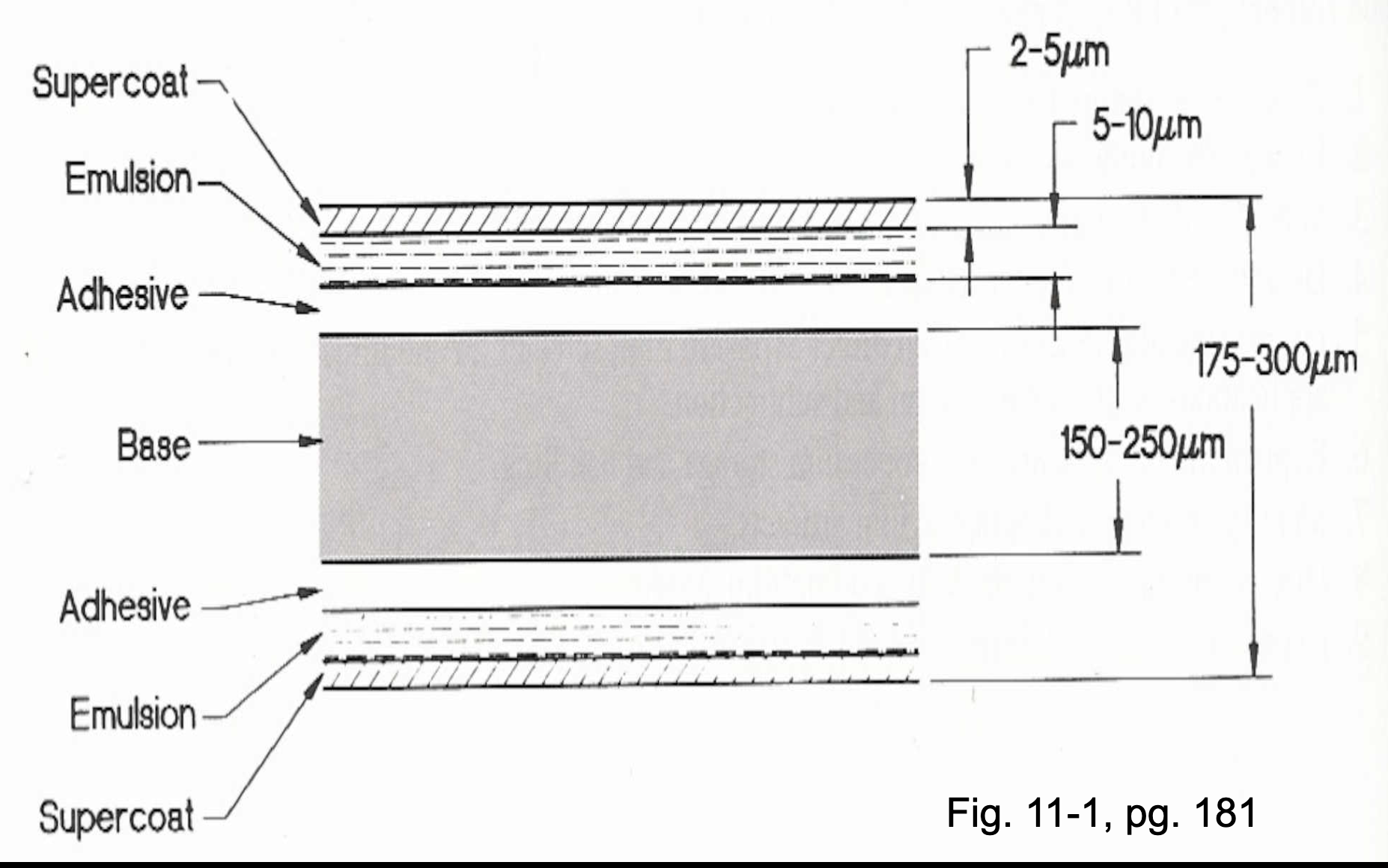
Protective coat
Protects the emulsion from damage
X-ray Film Processing Sequence
Useful Beam (x-rays)
↓
Body (attenuation)
↓
Exit Beam (x-rays)
↓
Cassette/Film Holder (light)
↓
Film/Emulsion/Crystals
What is one way light affects x-ray film?
Light affects x-ray film in a similar way it does photographic film.
How does the response of FILM to light and x-rays vary?
The response varies due to the production of film by different companies such as Kodak, Fuji, and DuPont.
What are some differences in film response among different manufacturers?
Differences include response to light, color sensitivity, and contrast scale.
Characteristics of Film Emulsion
1. Speed (sensitivity)
2. Latitude (refers to how many shades of gray an x-ray film can show)
a. Film latitude
b. Exposure latitude
c. Subject latitude
What does "speed" (sensitivity) refer to in x-ray film?
Speed (sensitivity) determines how the film responds to x-rays or light.
What does it mean when a film is described as "fast," "high speed," or "highly sensitive"?
It means that a small exposure is needed to produce darkness on a radiograph.
(2a.) What is film latitude?
Describes the varying shades of black, white, and gray of a radiograph. AKA latitude of a radiograph or scale of contrast
(2a. continued) What does "wide latitude" mean in relation to radiographs? (Note: also called “long scale” or '“low contrast” → because lots of grays)
Something that is referred to as having a wide latitude means there are many shades of gray. (Note: Favorable for abdomen and chest because more shades of grey)
(2a. continued) What does "narrow latitude" mean in relation to radiographs? (Note: also called “short scale” or “High Contrast” → because more BL & W than gray)
Narrow latitude means it is mostly black and white, with few shades of gray. (Note: Favorable for hand, feet, bone)
(2a. continued) How is "contrast" related to film latitude?
Low contrast means many shades of gray.
High contrast means black and white with few shades of gray.
(2a continued) The radiologist's chooses…
film with either wide or narrow latitude, or low or high contrast, based on the imaging needs. (it means the radiologist selects a film that already has either wide or narrow latitude, they choose the best one for the situation).
(2a continued) What happens to radiographic contrast when high kV and low mAs are used? (Note: High kV=more grays)
High kV, low mAs = wide latitude or low contrast film (Note: High kV for abdomen and chest) and (more penetrating x-rays, which means the x-ray beam passes through the patient more evenly)
(2a continued) What happens to radiographic contrast when low kV and high mAs are used?
Low kV, high mAs = narrow latitude or high contrast film (Note: Low kV for hands, etc)
(2b. Exposure latitude) What is exposure latitude refer to?
Refers to the range of exposure factors (mAs/kV) that will produce an acceptable film. (Note: Exposure latitude is like a safety zone for x-ray settings. It means how much you can change the x-ray power (mAs/kV) and still get a good picture.)
(2b. Exposure latitude) What happens to the film when there is narrow exposure latitude? (Given Exposure #1: 60 kV @ 2.5 mAs
Exposure #2: 75 kV @ 2.5 mAs)
The film will be twice as dark, and there is a narrow margin of error (low margin of error). (Note: this is talking about the difference between E1 and E2 where E2 is twice as dark)
(2b. Exposure latitude) What happens to the film when there is WIDE exposure latitude? (Given Exposure #1: 60 kV @ 2.5 mAs
Exposure #2: 75 kV @ 2.5 mAs)
The film will look the same, and there is a wide margin of error (high margin of error). (Note: this is talking about the difference between E1 and E2 where E2 looks the same as E1)
(2c Subject latitude) What does subject latitude refer to?
The tonal range of the subject, object, or patient. (Note: just means how many different things are in the part you're taking an X-ray of)
(2c Subject latitude) What happens when the subject is a THIN patient in terms of subject latitude?
A thin patient will result in a narrow tonal range of mostly black and white (high contrast).
(2c Subject latitude) What happens when the subject is a large patient in terms of subject latitude?
A large patient with more muscle or fat will result in a wide tonal range of more shades of gray (low contrast).
What is double emulsion film used for?
Images obtained from direct patient exposure. Like:
Screen film
Dental film
What is single emulsion film used for?
Images captured from display screen. Like:
Laser film
Spot film
Cinefluorography film
Duplicating film
Subtraction film
What type of film is screen film? (Note: its your regular imaging exams)
Double emulsion
How does screen film react?
Reacts to the direct action of x-rays or light emitted from screens (that “glow” or luminesce)
What colors do some screens emit?
Some screens emit light in a blue to violet color
Some screens glow green
X-ray film has to be sensitive to these colors of light in order to respond to them (spectral matching)
What is green sensitive film called?
Green sensitive film is termed orthochromatic film or ortho film
What is panchromatic film or pan film?
Film that is sensitive to all colors
X-ray film sensitive to red light?
X-ray film is NOT sensitive to red light.
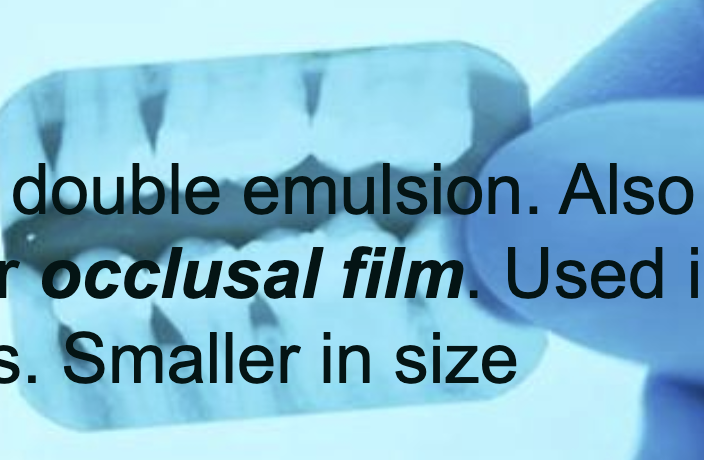
What type of film is dental film?
Double emulsion
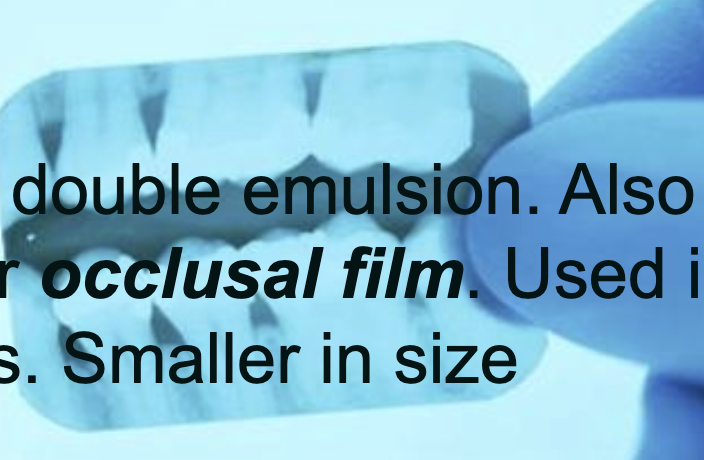
What else is dental film known as?
Also called periapical or occlusal film
Used in dental offices
Smaller in size
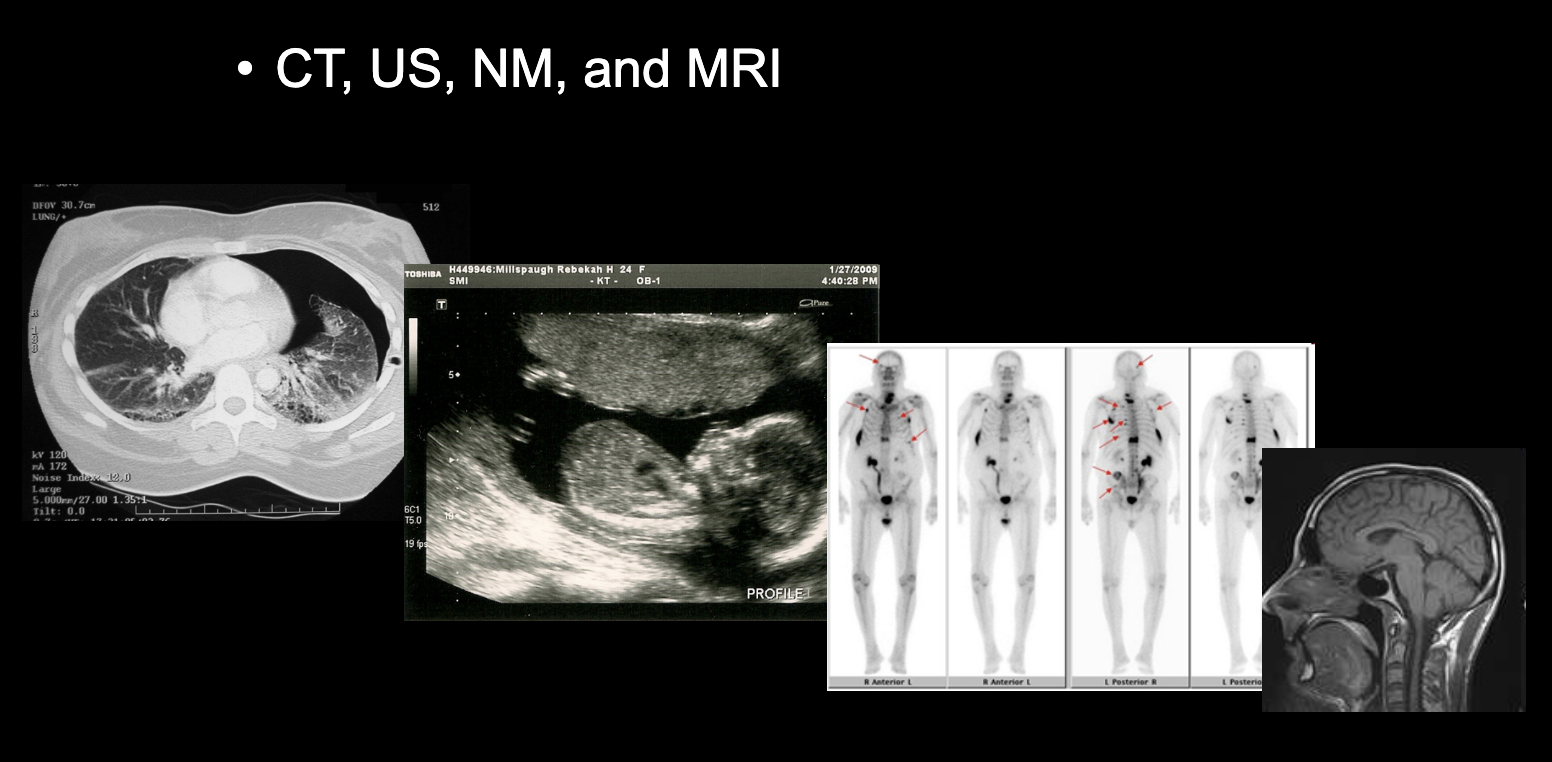
What is laser printing and whats it used for?
Hard copy from viewing monitor; used for CT, US, NM, and MRI. This is Single Emulsion film

What type of film is spot film?
Single emulsion type.

What is spot film used for?
Used to image anatomy from the fluoroscopic viewing monitor (static images).

What type of film is cinefluorography film?
Single emulsion.

What is cinefluorography film also used for?
Also used in angiography.
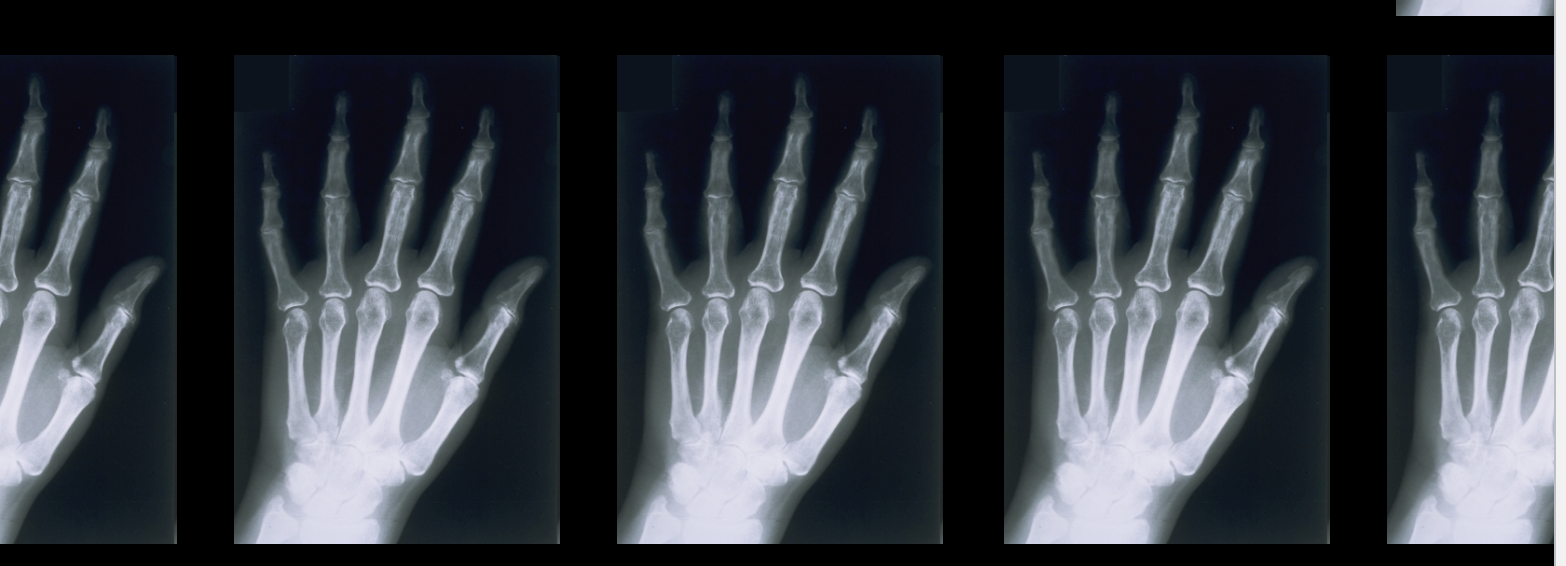
What is a duplicating film?
Single emulsion type film.
AKA copy film (Note: literally just a copy of a film)
Used to copy a radiograph.
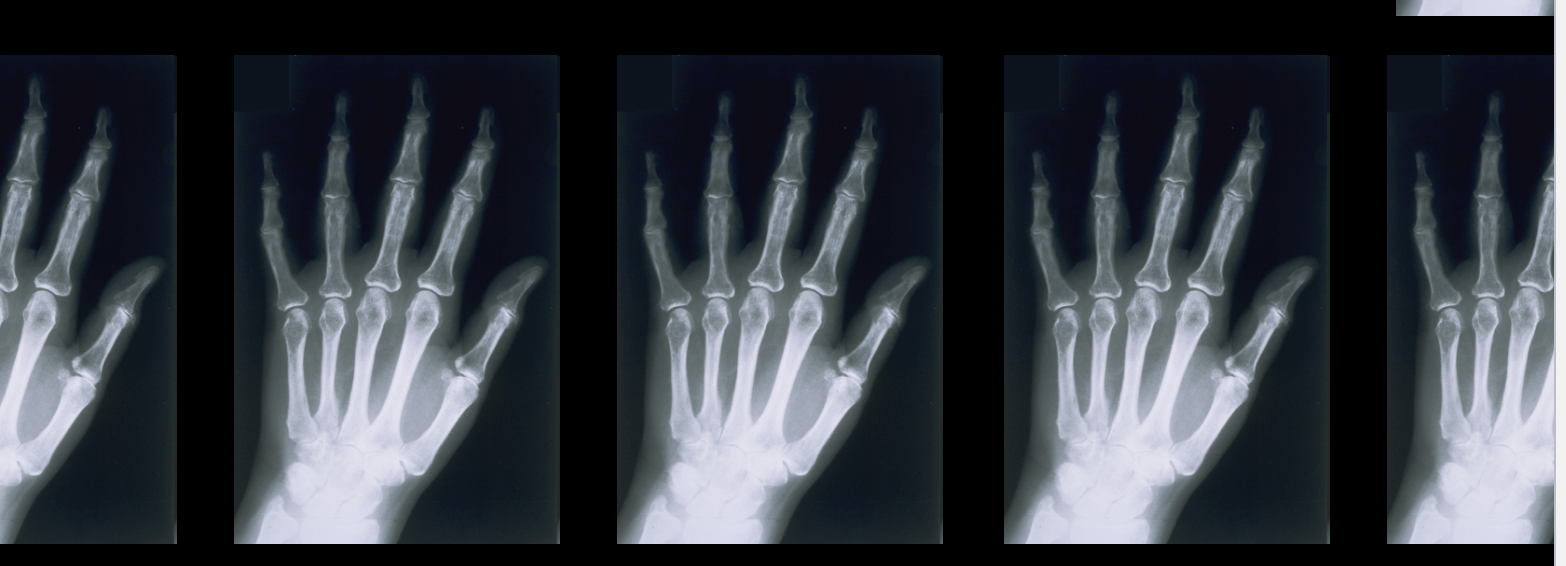
What happens when duplicating film is used?
Some detail is lost in the process.
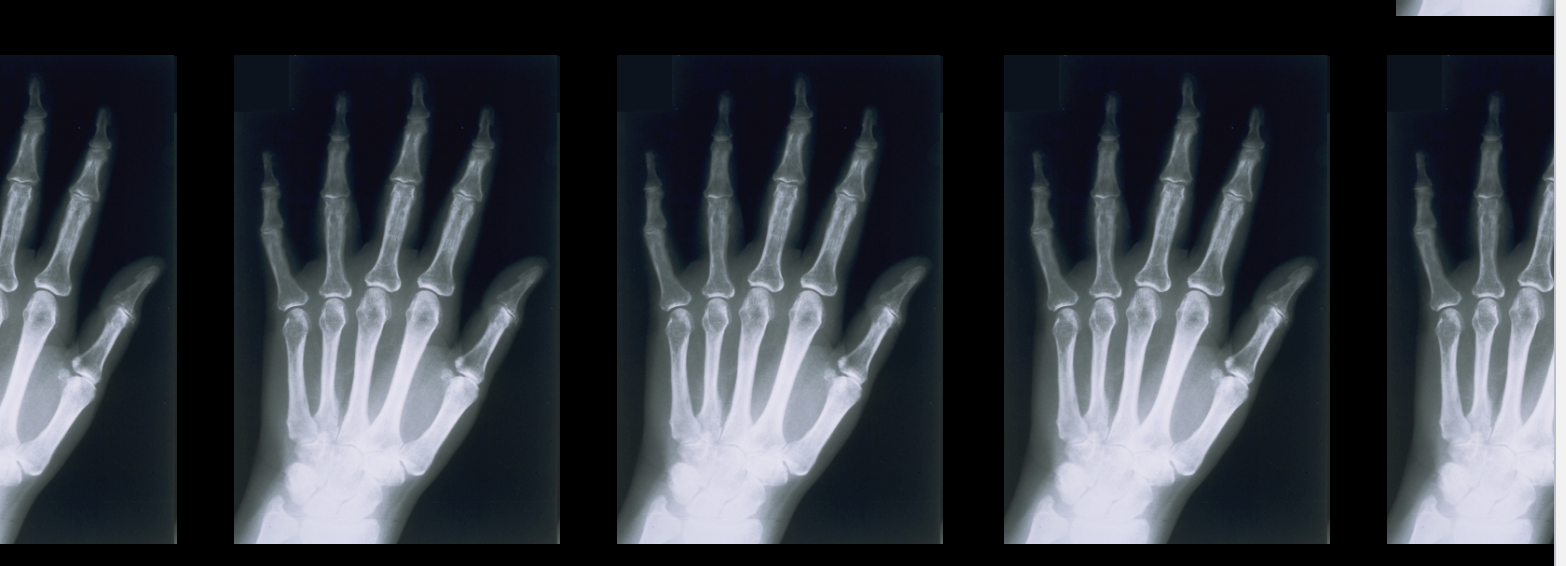
What should duplicating film not be confused with?
DO NOT CONFUSE WITH DUPLITIZED FILM.
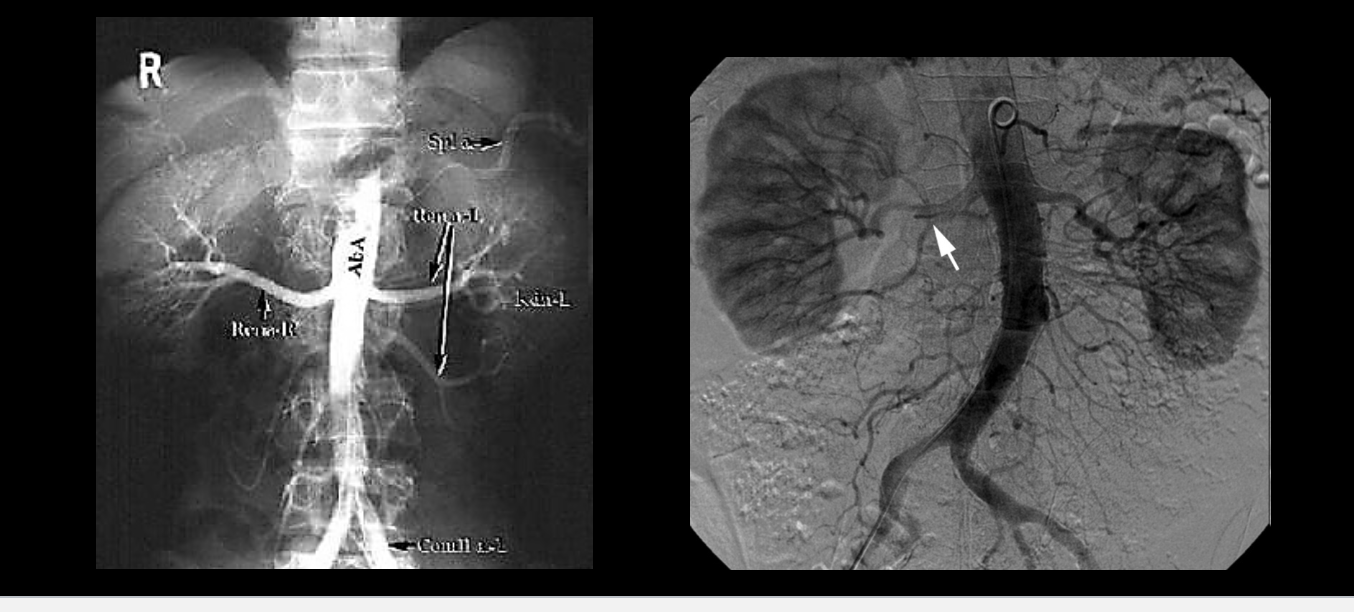
What type of film is subtraction film?
Single emulsion.
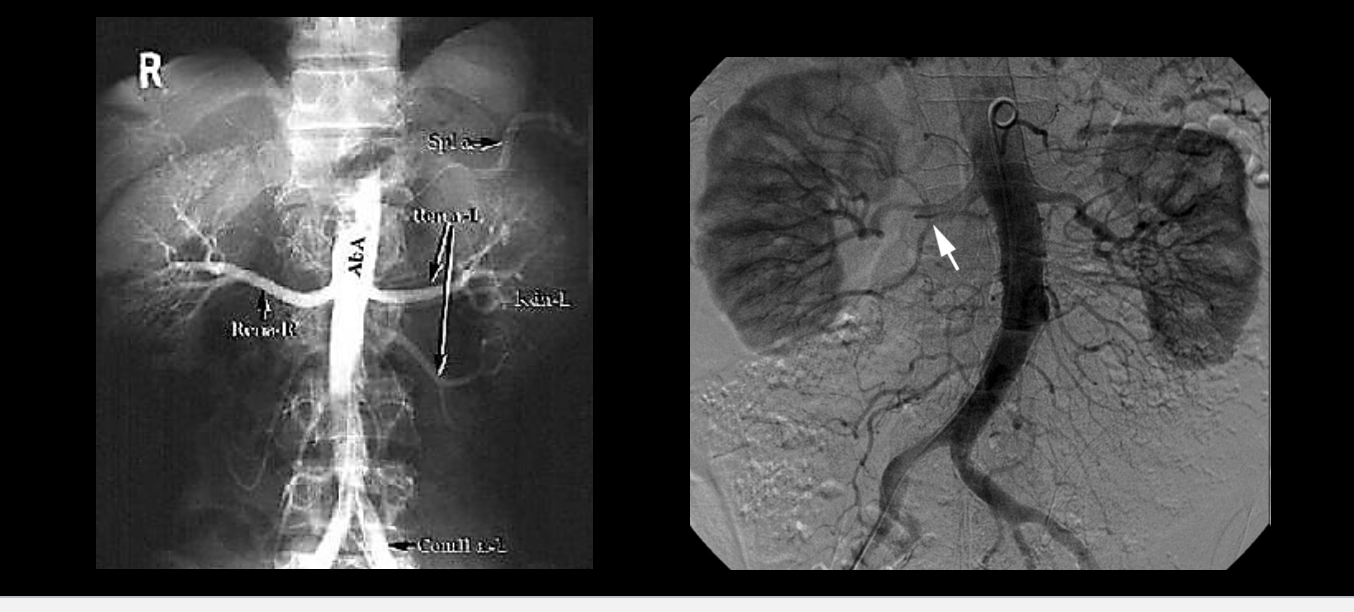
What is subtraction film used for?
Used in angiography.
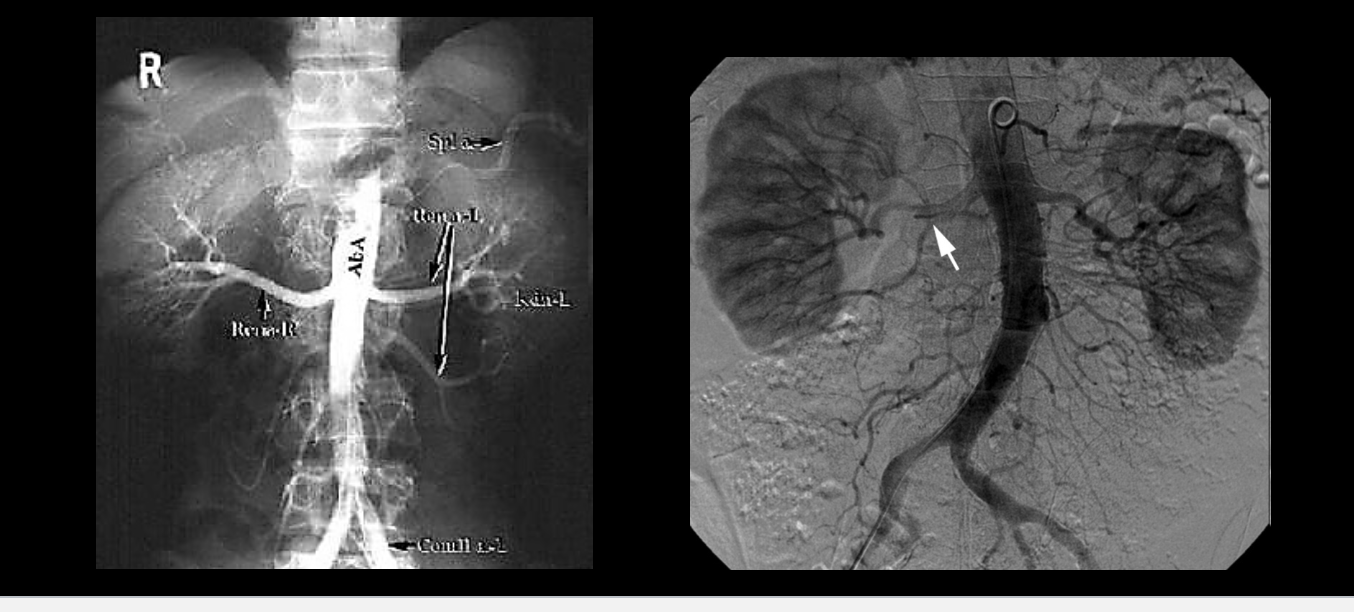
What does subtraction film do?
It reverses the radiographic image and removes surrounding structures so ALL that is visualized are the blood vessels. (Note: its “subtracting” the surrounding anatomy to see the blood vessels)
What happens when film is stored for long periods of time?
It will result in a loss of speed and images are gonna come out lighter
How should film be stored in relation to the date?
Store film with the newest date towards the back
How should open boxes of film be stored?
Open boxes of film should be stored in a light-proof, lead-lined storage bin
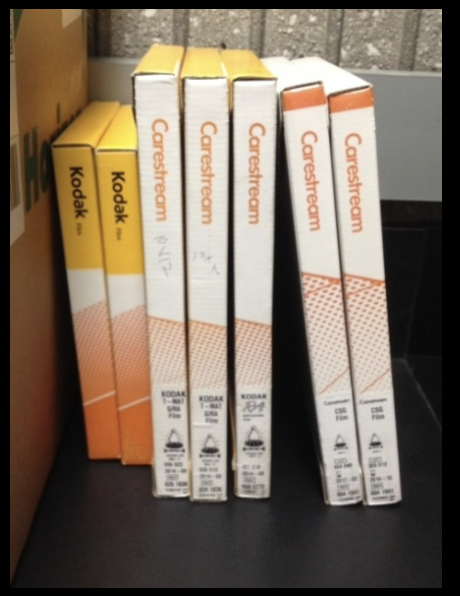
How should unopened boxes of film be stored?
Unopened boxes should be stored on edge away from radiation and heat sources. (Note: “stored on edge” like how books placed on bookshelves)
At what temperature should film be NOT stored? (Quiz Question)
Film should NOT be stored above 68°F (20°C)
What happens if film is stored at too high a temperature? (Quiz Question)
Heat produces unwanted density on the film called fog
What is the recommended room humidity for film storage? (Quiz Question)
Room condition of 40%-60% humidity
What happens if the humidity is too high? (Quiz Question)
The emulsion gets sticky, leading to:
Scratches
Fingerprints and pressure marks
What happens if the humidity is too low (dry)? (Quiz Question)
It causes static electricity
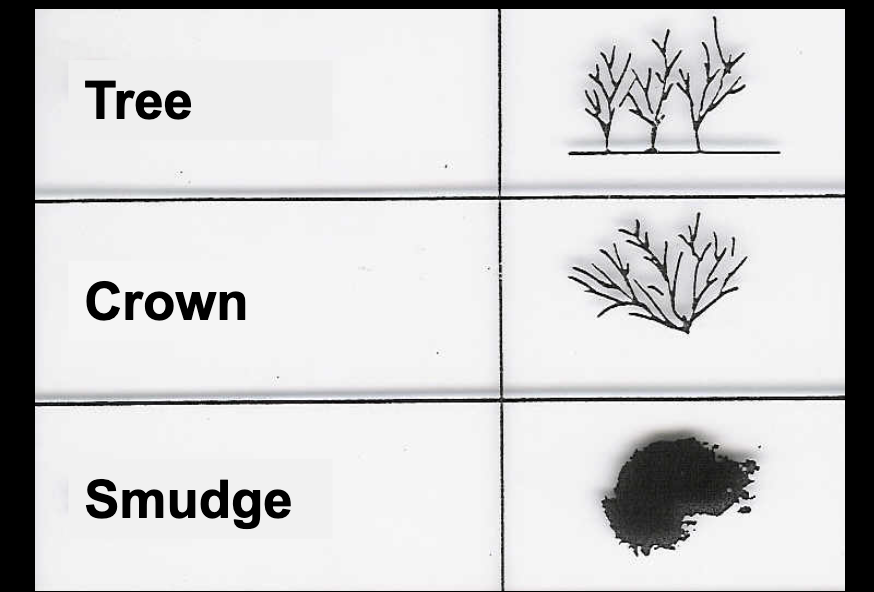
Three types of static electricity artifact (Note: this is basically when a radiographer with static electricity touches the film, like when you touch someone and shock them) (Quiz Question)
1. Tree
2. Crown
3. Smudge
How should film be handled?
Handle film on the corners only and avoid rough handling
What areas of the film should be a concern during handling?
Areas of concern are centralized on the film. (Note: Don’t touch the center of the film)
What is the FRONT of the cassette made of?
Bakelite, light metal, or carbon fiber.
What is the purpose of the material on the FRONT of the cassette?
It is electrically non-conductive and heat resistant. (Note: “electrically non-conductive” does not allow electricity to flow through it.)
What does the FRONT material of the cassette provide?
A sturdy framework.
What is the LID of the cassette constructed with?
Lead foil.
What is the function of the lead foil in the cassette lid (backside)? (Note: Lead attenuates the x-ray)
To prevent radiation from scattering back into the film causing fog or unwanted densities.
What materials are used to prevent light leaks in the cassette? (Note: the materials are lined on the edges of the cassette)
Felt or rubber lining. (Note: Felt is like the material on the pool table)
Why is felt or sponge placed behind the intensifying screens?
To provide good film-screen contact, which is important for good radiographic detail.
What happens if the film-screen contact is poor?
It decreases detail and resolution. Increases in density
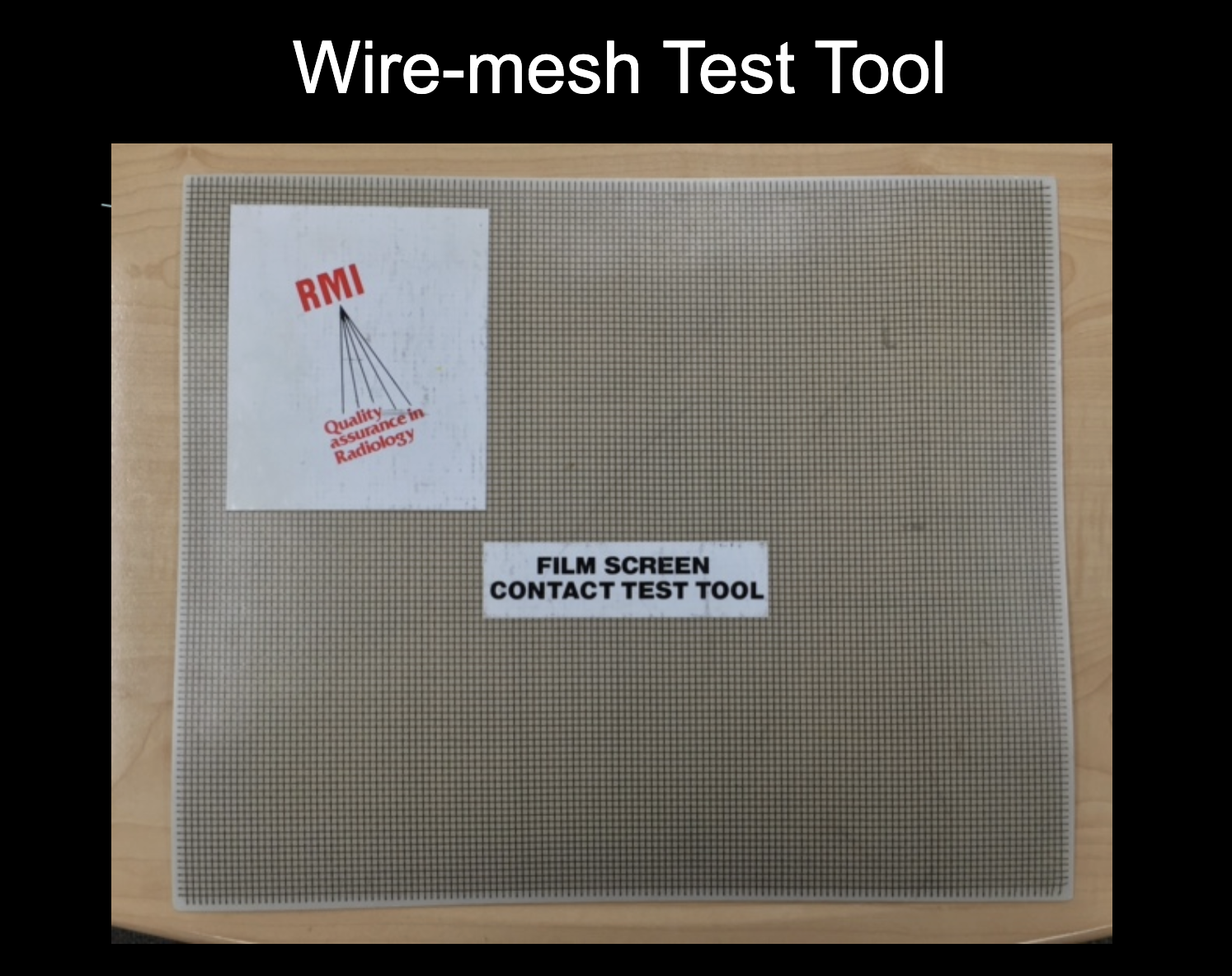
How is proper film-screen contact tested?
Using the wire-mesh test.
What causes poor film/screen contact? (Part 1)
Worn contact felt
Loose, bent, or broken hinges/latches
Warped screen due to excessive moisture
What causes poor film/screen contact? (Part 2)
Warped cassette front
Cracked cassette frame
Foreign matter under the screen